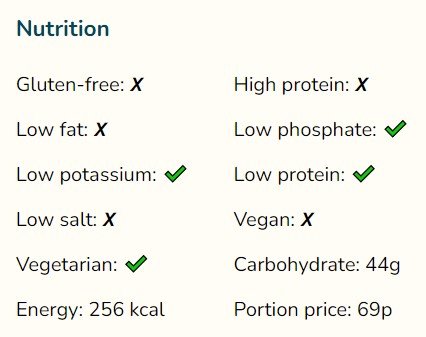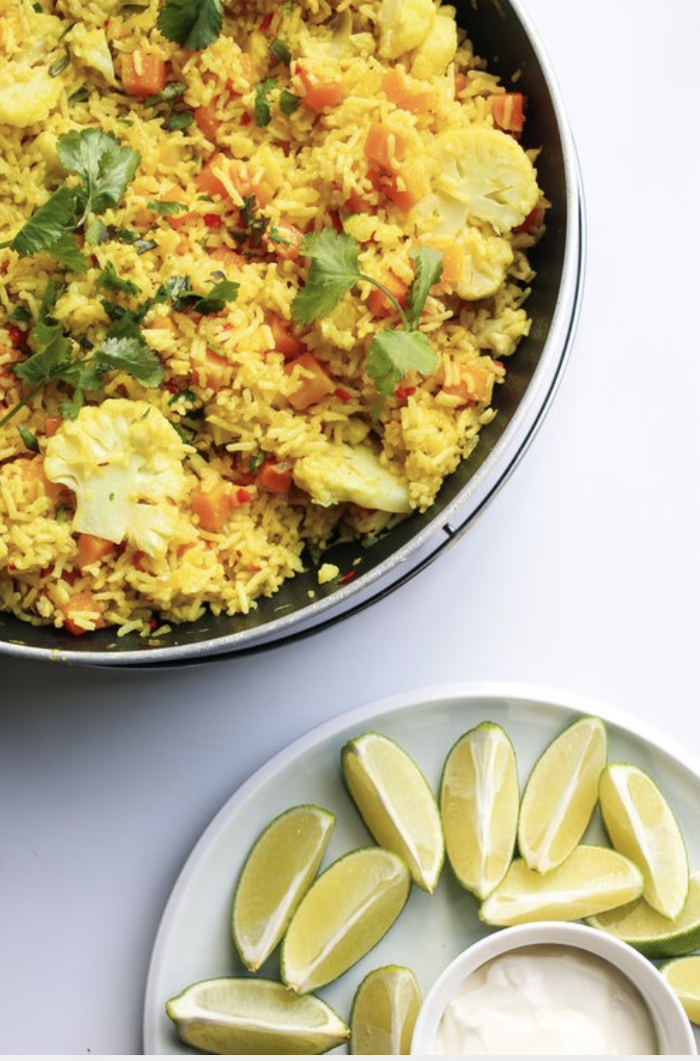Using Kidney Kitchen recipes
Food facts, tips and advice
If your dietitian or doctor has talked to you about making changes to your diet, use the simple Food Facts information on each recipe to check that it meets your individual needs.
The Food Facts provide information on the
- phosphate
- potassium
- protein
- carbohydrate
- salt
- calories
contained in each serving of a recipe.

Some recipes may contain ingredients which are higher in phosphate or potassium, but only in a small amount.
You can be reassured that all recipes have been very carefully analysed and approved by the British Dietetic Association's Kidney Dietitian Specialist Group (KDSG), who look at the overall content per serving. This is always explained in the Food Facts.
You will also find additional advice from our chefs and dietitians, including how to adjust the amount of protein in each recipe or adapt a dish for a special diet.
Most recipes will include suggestions for a healthier option as well as cheaper options and useful storage tips.

Kidney Kitchen recipe categories at a glance
In the Kidney Kitchen we want to make it as simple as possible for you to enjoy a wide variety of delicious and healthy food. You'll see the following labels on our recipes.
Everyday dish
Our Everyday dish recipes are healthy, balanced meals which are safe to eat regularly. They follow healthy eating guidelines and are lower in fat and sugar and salt. This makes them good for the whole family to enjoy but particularly for those with diabetes, heart disease or who are trying to control their weight.
These recipes are not necessarily low in potassium or phosphate, so don’t forget to check the Food Facts if you have been advised to modify your intake of these.
Special occasion
No one should have to miss out on the odd indulgence! These are recipes we suggest you save for a special occasion or enjoy as a treat in moderation.
While they have been adapted to be more suitable for people with kidney disease, these recipes are higher in fat, sugar or salt content and so we suggest they are eaten no more than once per week.
Vegan, Vegetarian and Gluten free
With a few small changes, most of our recipes can be easily adapted to your preferred diet; just follow the advice in the Food Facts. However, those labelled as Vegan or Vegetarian can be enjoyed without having to make any changes at all!
What we mean when we say…
Low phosphate
These recipes are suitable if you have been advised to follow a low phosphate diet. They may contain some higher phosphate ingredients but when used in the quantities and serving sizes specified, the overall content of the dish is low.
If you have been prescribed a phosphate binder we will advise you when to take these according to the guidance you have received from your doctor or dietitian. Read the Food Facts for more information.
Low potassium
These recipes are suitable for everyone and are particularly useful if you have been advised to eat less potassium. They may contain some higher potassium ingredients but when used in the quantities and serving sizes specified, the overall content of the dish is low. Read the Food Facts for more information.
Low protein
These recipes are suitable if you have been advised to lower your protein intake, usually when your kidney function is low, but you have not yet started dialysis or are being worked up for a transplant. Dialysis can mean this advice is reversed as dialysis may remove too much protein from your body. Ensure you check with your kidney dietitian before modifying your protein intake. Read the Food Facts for more information.
Low salt
We do not add salt to any Kidney Kitchen dish and low salt recipes will contain less than 0.3g salt per 100g. We adapt every dish to be as low in salt as possible and instead introduce more flavour using herbs and spices.
There are a few recipes which contain more salt and fall slightly outside of our ‘low salt’ parameters. Read the healthier options for more information and remember, most salt is in the food we buy, so it is important to check the labels.
Carbohydrate
If you have diabetes, all Kidney Kitchen meals are suitable for you. The carbohydrate content has been provided for those who have been trained in insulin adjustment.
The amount of carbohydrate per serving is an estimate based on the quantities and serving sizes specified. Read the healthier options for tips and suggestions to further reduce the fat, sugar, and salt in some recipes.
Calories
Our calorie information is calculated based on the quantities and serving size specified. As a guide, you may wish to choose the higher calorie meals if you are trying to gain weight and the lower calorie meals if you are trying to reduce or maintain your weight. Read the healthier options for tips and suggestions to further reduce the fat, sugar, and salt in some recipes.